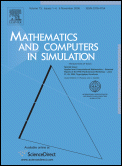Semantic links in integrated modelling frameworks
Abstract
It is commonly accepted that modelling frameworks offer a powerful tool for modellers, researchers and decision makers, since they allow the management, re-use and integration of mathematical models from various disciplines and at different spatial and temporal scales. However, the actual re-usability of models depends on a number of factors such as the accessibility of the source code, the compatibility of different binary platforms, and often it is left to the modellers own discipline and responsibility to structure a complex model in such a way that it is decomposed in smaller re-usable sub-components. What reusable and interchangeable means is also somewhat vague; although several approaches to build modelling frameworks have been developed, little attention has been dedicated to the intrinsic re-usability of components, in particular between different modelling frameworks. In this paper we focus on how models can be linked together to build complex integrated models. We stress that even if a model component interface is clear and reusable from a software standpoint, this is not a sufficient condition for reusing a component across different Integrated Modelling Frameworks. This reveals the need for adding rich semantics in model interfaces.
Download full text in pdf format
 Published as:
Published as:
A. E. Rizzoli,
M. Donatelli,
I. N. Athanasiadis,
F. Villa,
D. Huber,
Semantic links in integrated modelling frameworks,
Mathematics and Computers in Simulation, 78:412-423,
2008, doi:10.1016/j.matcom.2008.01.017.
You might also enjoy (View all publications)
- CY-Bench: A comprehensive benchmark dataset for sub-national crop yield forecasting
- Hybrid phenology modeling for predicting temperature effects on tree dormancy
- To measure or not: A cost-sensitive, selective measuring environment for agricultural management decisions with reinforcement learning
